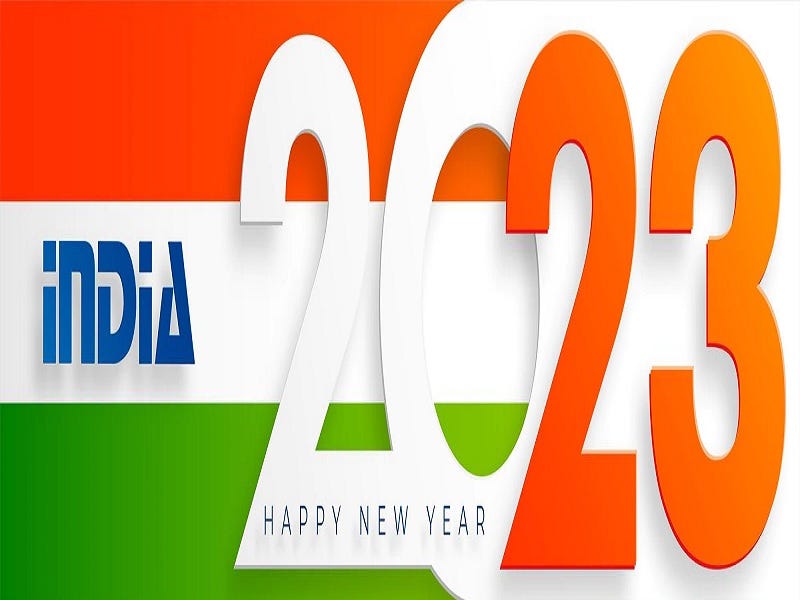Putin’s New Year Greeting To India Shows The Strength Of Their Strategic Partnership
Plenty can be extrapolated from his concise message, which is the purpose of the present piece. It’ll briefly explain what President Putin meant in each part in order to imbue the reader with a more solid understanding of the future of the Russian-Indian Strategic Partnership.
President Putin greeted the leaders of his country’s closest partners on New Year’s Eve, which of course also included India’s. The message that he sent to President Murmu and Prime Minister Modi contained more than meets the eye if one reads between the lines. Here’s what the Russian leader told them:
“In messages to President of the Republic of India Droupadi Murmu and Prime Minister of India Narendra Modi, the President of Russia stressed that in 2022, Russia and India marked the 75th anniversary of the diplomatic relations and, relying on positive traditions of friendship and mutual respect, the countries continue to develop their specially privileged strategic partnership, carry out large-scale trade and economic projects in addition to energy, military technology and other areas of cooperation, coordinate efforts in addressing important matters of regional and global agendas. ‘I am confident that India’s recently started SCO and G20 presidencies will open new opportunities for building multi-dimensional Russia-India cooperation for the benefit of our peoples, in the interests of strengthening stability and security in Asia and the entire world,’ Vladimir Putin stressed.”
Plenty can be extrapolated from the above text, which is the purpose of the present piece. It’ll briefly explain what President Putin meant in each part in order to imbue the reader with a more solid understanding of the future of the Russian-Indian Strategic Partnership.
The first sentence began by marking the three-quarter-century-long ties between their countries, which emphasizes just how far back their relations formally stretch. He also felt it fitting to remind observers that Russia and India always treat each other with mutual respect, which contrasts with the ways in which other countries treat that South Asian state. It’s this basis upon which they’ve been able to build the strategically successful relations that President Putin then briefly touched upon.
The “large-scale trade and economic projects” that he’s referring to are likely connected with the North-South Transport Corridor (NSTC) that he referenced several times last month. The first was during a meeting with the Council for Strategic Development and National Projects on 15 December, the second was a week later on 22 December during his impromptu press conference that evening, and the last one came four days after that on 24 December during an informal summit with the CIS heads of state.
The energy dimension of their strategic partnership is the one that’s scaled the most over the past year after Russia became India’s top oil supplier. Their ties are mutually beneficial since Moscow receives reliable revenue from which to formulate its budgetary plans while Delhi is assured of reliable supplies for further turbocharging its economy that grew at twice the pace of China’s last year. They also cooperate very closely on nuclear energy while LNG remains a promising vector as well.
On the topic of their military ties, Russian wares help India maintain the credibility of its deterrence capabilities vis-à-vis China and Pakistan, which in turn reduces the risk of a hot conflict between them and therefore raises the chances of political solutions to their disputes. Moreover, Moscow provides Delhi with state-of-the-art technology that it’s also willing to make in India, which is something that none of that South Asian state’s other military partners is even considering.
President Putin’s vague reference to “other areas of cooperation” probably implies Russia’s reported request last month for India to scale its exports by a whopping five times. This is intended not only to rectify the newfound trade deficit between them brought about as a result of Delhi purchasing so much of Moscow’s oil over the past year, but also to comprehensively diversify their economic relations with a view towards adding some heft to the NSTC.
Moving along to the part of his greeting about how Russia and India continue to “coordinate efforts in addressing important matters of regional and global agendas”, President Putin is alluding to their desire to build a third pole of influence together with Iran for breaking through bi-multipolarity. More insight into the strategic dynamics connected with the global systemic transition can be obtained through the preceding hyperlinks since explaining them in detail is beyond the scope of the present analysis.
The final sentence about the Russian leader’s personal hopes for their strategic partnership can be interpreted as a reaffirmation of his country’s support for India’s envisioned leadership of the Global South via its chairmanship of the G20 and its long-running request for a permanent UNSC seat. President Putin is also expressing confidence that India’s rapid rise as a globally significant Great Power over the past year will continue being mutually beneficial for Russia as well.
Putting it all together, it can therefore be concluded that the Russian leader’s New Year greeting to India was actually a lot more meaningful than many observers might have realized. He concisely ran through the gamut of their relations while praising his strategic partner’s newfound role in global affairs over the past year. Nobody should therefore have any doubt that the special and privileged Russian-Indian Strategic Partnership will continue functioning as one of the most influential in the world this year.




